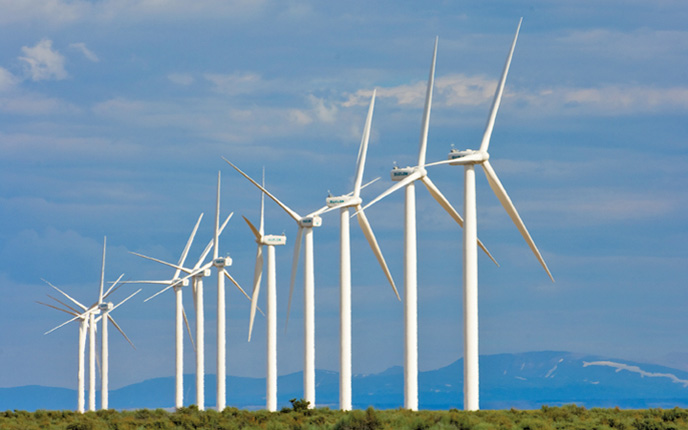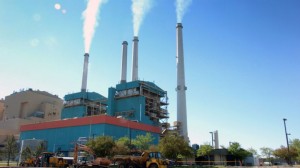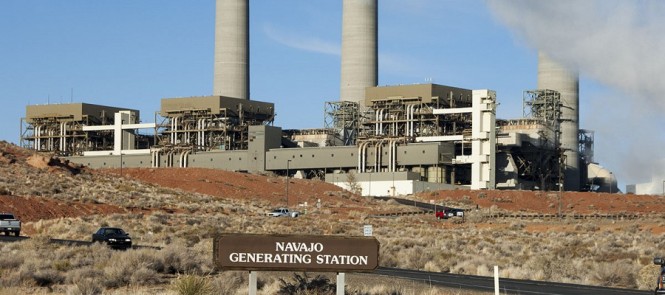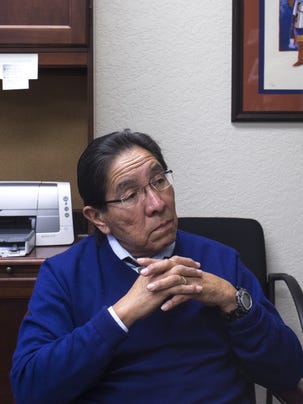 Wyoming is pretty much the Saudi Arabia of wind. In fact, Wyoming wind farms are starting to get so cheap that they can out-compete solar, gas and coal, even without subsidies.
Wyoming is pretty much the Saudi Arabia of wind. In fact, Wyoming wind farms are starting to get so cheap that they can out-compete solar, gas and coal, even without subsidies.
The financial firm Lazard released its most recent Levelized Cost of Energy Analysis, an annual report of different energy sources and their costs, which shows this progress in hard numbers. It documents that new wind power costs between $30 and $60 dollars per megawatt hour in levelized costs. And with the federal tax subsidy included, the cost of new wind falls to between $14 and $52 (Wyoming does even better than most places on cost because the state is just so windy next to the Rocky Mountains).
By comparison, coal had a higher cost of between $60 and $143 per megawatt hour, while a combined cycle natural gas plant’s cost was between $42 and $78 per megawatt hour, cheaper than coal but not as cheap as wind. Nuclear was way high, between $112 and $183.
The result of these numbers is a booming wind industry in the Cowboy State, as Heather Richards of the Casper Star-Tribune reports:
Developers Power Company of Wyoming and Viridis Eolia both have significant wind projects proposed in the state. Power Company’s Chokecherry Sierra Madre wind farm is under construction for the first phase of a 1,000 turbine farm near Rawlins. And Rocky Mountain Power, the state’s largest utility, would like to repower their entire wind fleet in the state, as well as bring 1,100 new megawatts online.
But the coal industry is not happy about it. The state’s coal sector is still the largest in the country, despite this new competition, and it’s facing considerable pressure from cheaper fuel sources both traditional and renewable. The industry hates the federal tax credit for wind and even got the state to levy a separate tax on wind production.
But with costs continuing to fall, plus the prospect of Wyoming serving out-of-state renewables market in places like California (should California successfully regionalize its grid), the coal industry’s fate will be unavoidable. In the long term, that’s not only good for air quality and stabilizing the Earth’s climate, it will also diminish the political power of the industry to try to hurt clean energy through bad tax policy, whether at the state or federal level.
The coal industry is hoping that the Trump administration will revive its sagging fortunes. I’ll be on AirTalk on KPCC radio (89.3 FM) in Los Angeles today at 11:20am PT to discuss the industry’s future. As the AirTalk page describes:
It’s no secret that environmentalists and the coal mining industry have long been at odds. But more fuel has been added to the fire, so to speak, as the Trump Administration’s Interior Department has moved to lift a moratorium on coal leases in public lands. The temporary ban was enacted under the Obama Administration, which quickly drew opposition from major mining companies.
As reported by the New York Times, about 85 percent of coal is mined from federal lands in the West, from the Powder River Basin. The basin, which includes lands in Wyoming and Montana, produces a small amount of exported coal. Trump has accused the Obama Administration of trying to stifle exports, a market which has become increasingly competitive in sales to power plants in Asia, particularly China. In the West, Vancouver has the most accessible export terminal, but more capacity is needed to stay competitive in the growing global market. And environmentalists have blocked any new developments for a terminal in the U.S.
Joining me on the panel will be:
- Mark Mills, physicist and senior fellow at the Manhattan Institute where his focus includes energy and energy technology, and a faculty fellow at Northwestern’s Engineering School; he tweets @MarkPMills
- Daniel Schrag, geochemist and professor of geology, environmental science and engineering; he is also the director at Harvard University Center for the Environment and served on President Obama’s Council of Advisors for Science and Technology (2009 to 2016)
For those out of the area, you can stream it live.
As coal-fired power plants shut down, many Native American tribes are facing the brunt. I wrote earlier this year about the challenges facing the Navajo and Hopi Tribes, in particular, with the closure of a nearby plant.
 As in many areas around the country, environmental advocates tout the jobs and economic prospects of solar PV as a replacement for lost coal jobs. To put that to the test, the Farmington Daily Times reported on the Navajo Nation’s first large-scale solar energy facility on the reservation. The 27.3-megawatt Kayenta Solar Project opened in June. The electricity is sold to the Salt River Project for distribution, with revenues funding local tribal programs.
As in many areas around the country, environmental advocates tout the jobs and economic prospects of solar PV as a replacement for lost coal jobs. To put that to the test, the Farmington Daily Times reported on the Navajo Nation’s first large-scale solar energy facility on the reservation. The 27.3-megawatt Kayenta Solar Project opened in June. The electricity is sold to the Salt River Project for distribution, with revenues funding local tribal programs.
The project has had some immediate jobs and economic benefits:
[Navajo utility spokesperson Deenise] Becenti said at the height of construction, there were 250 personnel with 195 Navajo workers.
The $60 million facility was built using a construction loan from the National Rural Utilities Cooperative Finance Corporation.
Revenue from the solar project will help NTUA extend electricity to several communities on the reservation, according to an October 2016 press release from the tribal enterprise.
Last year, NTUA [Navajo Tribal Utility Authority] finalized an agreement with the tribe’s Community Development Block Grant program to increase electrical services to 92 residences.
The tribal enterprise will use revenues from the solar project as matching funds for the grant, the release states.
[NTUA General Manager Walter] Haase said in an email this will be the first time most families will have electricity in their homes.
“Using revenue generated from the solar project gives us the ability to bring electric service to these communities and help dramatically raise the standard of living for our Navajo families,” he said.
Overall, it seems like a success story for a rural community transitioning from coal to renewables. And it’s only the start, as the article indicates there’s potential for expanding the solar farm.
While the bulk of the jobs here are probably temporary construction ones, further study could be useful to examine the full impact of the new facility. For example, the tribal programs funded by the solar revenue presumably create their own jobs and economic impacts, which could further offset the loss of coal jobs and revenue. Either way, this is a story worth keeping an eye on for advocates of transitioning to renewables in rural areas everywhere.

 Donald Trump and his Republican backers have long railed against environmental laws and regulations that disfavor coal. Trump won in part by promising to bring back coal mining jobs.
Donald Trump and his Republican backers have long railed against environmental laws and regulations that disfavor coal. Trump won in part by promising to bring back coal mining jobs.

